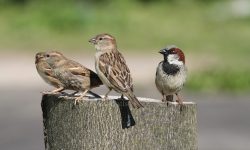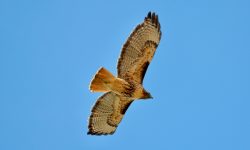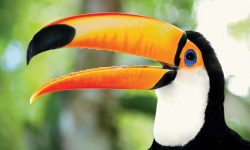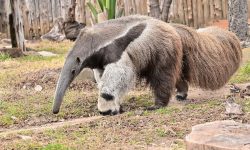Kingfishers aren’t just beautiful—they’re biomechanical wonders, wrapped in shimmering feathers and powered by precision. Behind their jewel-toned appearance lies a story of evolutionary brilliance. These birds have mastered air, water, and land with adaptations that rival those of any predator. Let’s dive into the twelve most remarkable traits that make the kingfisher a true marvel of nature.
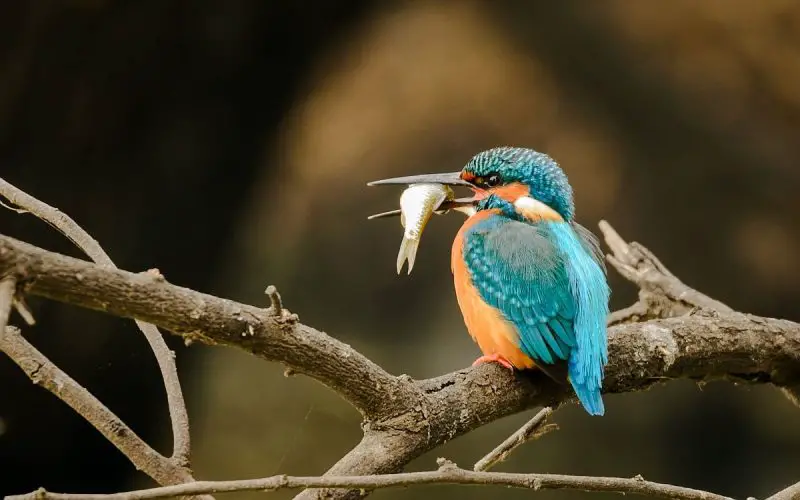
1. A Spear for a Beak: Nature’s Precision Weapon
The kingfisher’s beak isn’t just long and sharp—it’s a masterpiece of evolutionary engineering, sculpted over millennia to pierce the surface of water with almost ghostlike silence. Perfectly straight and tapered to a fine point, this beak functions like a living spear, allowing the bird to transition from air to water in a single fluid motion.
When a kingfisher spots its prey from above—a glinting fish flickering just beneath the surface—it calculates distance, angle, and velocity in a blink. Then, without a sound, it launches downward. As it slices through the air and hits the water, its streamlined beak takes the full brunt of impact, minimizing splash and turbulence. There is no flailing, no chaos—just a precise entry, as if the water barely notices the breach.
Scientists studying high-speed footage of kingfisher dives were so impressed by the mechanics of this motion that it inspired a redesign of Japan’s Shinkansen bullet trains. The trains’ previous blunt noses caused loud sonic booms when emerging from tunnels. By modeling the front of the train after the kingfisher’s beak, engineers reduced noise, increased speed, and improved energy efficiency—proving that this bird doesn’t just master physics in the wild, it teaches humans how to master it, too.
But beyond aerodynamics and mechanics, the beak is also the kingfisher’s surgical tool. It doesn’t stab aimlessly. It targets. It strikes. And in a split second, it emerges from the water with a fish clamped in its jaws, gleaming and writhing. Every dive is a lesson in precision—proof that in the kingfisher’s world, form doesn’t just follow function. It perfects it.
2. Feathers That Don’t Just Shine—They Bend Light into Magic
The kingfisher doesn’t merely wear color—it manipulates light itself. Its plumage glows with hues so vivid they seem conjured from another world: electric turquoise, deep sapphire, fiery copper-orange. But here’s the secret—these colors aren’t painted on. They aren’t even pigments.
Instead, kingfisher feathers are built with microscopic layers of platelets and air pockets that interact with light through interference and diffraction. This phenomenon, known as structural coloration, means the colors we see are created by how light bends, reflects, and scatters when it hits the feathers. It’s the same principle that gives peacock tails their shifting hues, or makes soap bubbles shimmer—but on the kingfisher, the effect is constant, controlled, and breathtaking.
What’s more, these feathers change depending on the angle of light. One moment the bird appears a deep jungle green, the next it flares into a neon blaze of blue. This dazzling quality serves more than just beauty—it plays a role in courtship, territorial display, and camouflage. In bright sunlight, a male kingfisher may flash like a jewel to impress a potential mate. But viewed from above, the same shimmering blue blends into the water below, protecting it from aerial predators.
And to other animals with UV vision—including many birds—kingfishers reveal even more: ultraviolet patterns hidden from the human eye, unique to each species and sometimes even to each individual. These secret signals allow kingfishers to identify rivals or partners at a glance.
So what looks like a bird draped in gemstone feathers is really something more wondrous: a creature that doesn’t just reflect light—it commands it, turning each movement into a moment of optical enchantment.
3. Binocular Vision with Underwater Precision
The kingfisher’s dive is a masterpiece of timing, but behind its flawless execution lies a visual system engineered for split-second accuracy. Unlike most birds with eyes on the sides of their heads, the kingfisher’s eyes are angled forward, granting it true binocular vision. This overlapping field of view allows it to calculate depth with astonishing precision—essential for pinpointing a darting fish from several meters above.
But the real magic happens at the water’s surface, where light bends, refraction distorts, and motion blurs. For most predators, this boundary would be an optical nightmare. For the kingfisher, it’s just another element to master. As it plummets toward its prey, its eyes perform a feat few birds can match: dynamic lens reshaping. The internal muscles flex the lens into a new shape, instantly adjusting for the change in medium—from air to water—ensuring that the image stays sharp no matter where the fish swims.
To complete this visual toolkit, the kingfisher draws a biological visor over its eyes: the nictitating membrane—a translucent third eyelid that slides across the eye during the dive. This delicate film acts like built-in goggles, protecting the cornea from impact and water pressure while preserving visibility. Unlike a human swimmer’s blurry underwater view, the kingfisher sees with startling clarity as it slices into the stream.
It’s this combination—forward-facing eyes, rapid lens modulation, and protective membranes—that transforms the kingfisher into an avian sniper, striking fish with unerring accuracy through a lens of rippling water. In a world where milliseconds and millimeters mean the difference between feast and failure, the kingfisher’s eyes never blink, never guess, and never miss.
4. Compact Yet Powerful: Anatomy for Flight and Plunge
The kingfisher may look delicate at first glance—a small bird perched quietly by a stream, feathers glowing in the light. But beneath that glittering exterior is a body built for speed, strength, and shock absorption. This bird is compact like a coiled spring, ready to unleash sudden bursts of energy with devastating precision.
Its chest hides an impressive secret: powerful pectoral muscles that account for a large portion of its body mass. These muscles fuel rapid, almost hummingbird-like wingbeats that allow the kingfisher to hover briefly in mid-air, scanning the water before making its move. In that moment of suspension, it defies gravity—still, focused, calculating—before snapping into action.
Unlike soaring birds with long, gliding wings, the kingfisher’s wings are short, broad, and muscular—perfectly adapted for explosive acceleration. It doesn’t drift; it launches. One second it’s a statue, the next it’s a bolt of blue and copper, plunging toward the surface at breakneck speed. Its wing design gives it control in tight spaces, whether darting through tangled riverbanks or threading between low branches.
But flight is only half the story. The kingfisher’s body is also engineered for impact. Its weight is balanced along a straight, streamlined axis—from head to tail—ensuring that when it hits the water, it doesn’t tumble or splash. The skull is reinforced to absorb shock, and the neck muscles act like shock absorbers during entry, protecting the brain from the sudden deceleration.
No wasted motion. No wasted mass. Every feather, every muscle, every angle serves a single mission: to turn this small bird into a living projectile, diving with the force of instinct and the precision of a guided missile.
5. Lightning Flight Along the Waterline
If a hawk soars and a heron glides, the kingfisher fires. Its flight isn’t poetic—it’s ballistic. This bird doesn’t waste time with lazy arcs across the sky. Instead, it cuts through air like a living arrow, hugging the contours of rivers, lakes, and mangrove channels with relentless velocity.
Just inches above the water’s surface, the kingfisher races forward in a blur of motion, blue flame trailing behind. Its wings beat rapidly but efficiently, driving it in a straight line with minimal turbulence. This low, tight trajectory does more than look impressive—it offers tactical advantage. Flying so close to the surface helps it avoid aerial predators, surprise prey, and conserve energy by riding the aerodynamic phenomenon known as ground effect, where air pressure between wing and surface increases lift.
But speed alone doesn’t define this aerial hunter—control does. Whether threading through tight forest clearings or swerving past river reeds, the kingfisher demonstrates the agility of a fighter jet. Its short wings and compact body allow it to make split-second course corrections, dodge branches mid-flight, and disappear between tree trunks before your eye can track it.
Some species, like the common kingfisher, have been clocked at speeds exceeding 40 kilometers per hour (25 mph)—an astonishing feat for such a small bird. In dense environments where visibility is limited and danger can appear in a flash, this lightning-fast, razor-precise flight style isn’t just impressive. It’s a matter of survival.
To witness a kingfisher in motion is to see energy made visible—an explosion of color and intent that blurs the line between muscle, instinct, and sheer mechanical perfection.
6. Dive Mechanics: From Stillness to Precision Strike
Like a poised javelin of feathers, the kingfisher perches in absolute stillness, its body tense, eyes scanning the moving mosaic beneath the water’s surface. Time seems to slow as it calculates—judging distance, speed, refraction, and angle with uncanny precision. Then, without warning, the air breaks.
In a single, fluid motion, the bird transforms from sentinel to spear. Its wings snap back tight against its body, forming a sleek, aerodynamic missile, while its beak leads the charge—an evolutionary blade honed by countless successful hunts. Gravity does not drag it down; it guides the bird, pulling it through the air with increasing velocity, every muscle and feather coordinated in silence.
When the kingfisher hits the water, it doesn’t splash—it slices. The entry is so clean it barely disturbs the surface tension. This seamless plunge isn’t just luck—it’s the result of intricate physics. The bird’s mass, body angle, and feather compression all contribute to minimizing resistance, allowing it to reach its target with shocking speed and accuracy.
Underwater, the kingfisher’s third eyelid slides across its eyes like a translucent diving mask, and its pupils constrict to adjust for the refracted image. Within a fraction of a second, it clamps its beak shut on a struggling fish.
But the drama doesn’t end beneath the surface. With a few powerful wingbeats, the kingfisher ascends, fish wriggling in its grip. Back on its perch, it begins the final act: stunning the prey by beating it rhythmically against a branch. This not only immobilizes the catch but also aligns it for safe, headfirst swallowing—minimizing the risk of fins or spines catching in the throat.
Every dive tells a story of instinct layered over physics, honed by generations of survival. It is not just a hunt—it is a performance of biomechanical elegance, one perfected by repetition, guided by vision, and executed with the swiftness of thunder.
7. Ecological Anchors: Living Where Water Lives
To find a kingfisher, follow the water. These birds are not just residents of aquatic landscapes—they are extensions of them, woven into the rhythm of flowing rivers and glistening lakes, hugging the bends of estuaries and the shadowy roots of mangrove swamps. Wherever there is clear, living water, a flash of electric blue may follow.
Kingfishers rely on more than just fish. Water offers them everything: food, shelter, courtship grounds, and nesting banks. The crumbling, earthen edges of riverbanks are their nurseries, where tunnels are carved into soft soil, hidden from predators and shaded from the sun. Over generations, entire kingfisher lineages may return to the same stretch of water, turning a quiet bend in the stream into a dynasty.
But their role goes deeper than territory. Kingfishers are considered bioindicators—their presence often reflects a healthy, balanced environment. They require clean water to see and catch prey, and stable banks for nesting. If pollution clouds the water or erosion eats away the shoreline, kingfishers vanish. To see one is to glimpse an ecosystem in balance, a snapshot of ecological wellness in feathered form.
And they’re more adaptable than their name implies. In tropical rainforests, where rivers twist beneath towering canopies, some kingfisher species have turned to insects, spiders, or even small amphibians. Perched silently above a leaf-littered forest floor, these jungle cousins stalk with the same patience and precision, proving that even away from open waters, the kingfisher’s essence survives.
They are not just birds of the water’s edge—they are guardians of it, tethered to the rise and fall of rivers, the sparkle of morning dew on reeds, and the soft erosion of banks that quietly shape the world. Where the water thrives, so do they.
8. Underground Architects: Tunnel Nesting
While most birds weave twigs high among branches, the kingfisher chooses a very different blueprint. It is a subterranean architect, swapping tree limbs for mud walls and sky views for shadowed chambers. With beak like a chisel and feet like miniature shovels, the kingfisher becomes a determined excavator, carving its legacy straight into the earth.
Their preferred construction site? Vertical earthen banks—river edges, sand cliffs, or even man-made dikes—where the soil is firm enough to hold structure, yet soft enough to be carved. Starting from a small perch or ledge, the pair gets to work. The male often initiates the digging, pounding the wall with rhythmic jabs of his beak, while the female clears debris with flicks of her feet. Together, they tunnel inward—a horizontal shaft that can stretch up to a meter in length, ending in a softly rounded nesting chamber.
Inside, there’s no nest in the traditional sense. The floor is bare, save for a scattering of fish bones and scales from past feedings. But this **earthy chamber offers something far more valuable than twigs and leaves—**temperature stability, humidity retention, and protection from the reach of most predators. In tropical heat or temperate chill, the burrow remains relatively constant, cradling fragile eggs in a microclimate of safety.
Excavation can take days or even weeks, and pairs may reuse or renovate old tunnels season after season. These underground sanctuaries are not just clever—they are critical. A poorly placed or shallow tunnel can collapse, flooding or exposing the nest to scavengers. But when built with precision and patience, a kingfisher burrow becomes a fortress for new life, hidden in plain sight along the flowing edge of the wild.
To see a kingfisher disappear into a riverbank is to witness something ancient and intimate—a moment when bird becomes builder, and the earth opens to shelter its secret.
9. Equal-Opportunity Parenting: A Family Built on Balance
In the world of kingfishers, parenting is not a one-bird show. Here, equality isn’t idealistic—it’s instinctual. Male and female stand side by side from the first scrape of the tunnel wall to the final fledgling flight. They are partners in excavation, in defense, in devotion.
Once the creamy white eggs are laid deep within the earth, incubation begins—and the schedule is shared. Day and night, the pair alternates sitting on the clutch, maintaining warmth and safety in the humid dark. There are no squabbles over whose turn it is. No disappearing acts. Only rhythm, reliability, and instinctive care.
When the chicks hatch—blind, featherless, and endlessly hungry—the teamwork intensifies. Parents take turns flying back and forth in tireless shifts, bringing fish, insects, or small amphibians to the burrow. Incredibly, they often feed the chicks one by one, ensuring each fledgling gets its fair share of nourishment. The process requires not just energy, but memory—keeping track of who ate last, who chirped loudest, and who still waits with a gaping mouth.
In some species, this cooperative dynamic expands into something even more remarkable: alloparenting. Older offspring from a previous brood may stay behind to help raise their younger siblings—feeding them, guarding the burrow, even babysitting while the parents forage. It’s a rare behavior in birds, hinting at complex social bonds and deep-rooted survival strategies.
This harmony of roles doesn’t just improve success rates—it defines the kingfisher family. In a landscape where predators lurk and riverbanks crumble, it’s this synchronized dedication that gives each chick a fighting chance. No gender leads. No wing bears more weight. In the quiet shadows of an earthen nest, parenthood is partnership, and the future is raised together, meal by glistening meal.
10. Global Presence, Local Adaptations: One Family, A Thousand Worlds
Though often imagined as a single flash of blue beside a river, the kingfisher is not one bird—it is a global dynasty, a sprawling avian family of over 90 distinct species that have claimed nearly every corner of the Earth, from Arctic streams to tropical jungles, from mangrove estuaries to desert canyons. The only continent they’ve left untouched is Antarctica—everywhere else, they have found a way to thrive.
This worldwide distribution is no accident. Kingfishers are masters of adaptive evolution. In the chill of northern Europe, species like the Common Kingfisher haunt frozen streams, their metabolism fine-tuned to survive the cold and their dives timed between ice floes. In the sun-drenched wetlands of Africa, the Giant Kingfisher stalks prey with patience, using brute strength and bold coloration to dominate its niche.
But not all kingfishers are fishers. In the dense rainforests of Southeast Asia, some species have traded water for foliage, hunting grasshoppers, spiders, and snakes from above. In Australia’s arid interior, others like the Laughing Kookaburra—perhaps the most iconic of all—have evolved into terrestrial predators, feeding on lizards and even small mammals, with booming voices that echo through the eucalyptus trees.
Size ranges as dramatically as diet. Some species are no larger than a hummingbird, delicate and quick as a spark. Others, like the chunky Belted Kingfisher of North America, cut imposing silhouettes against the skyline. Their plumage varies too—from metallic blues and rich russets to pale chestnut and mossy green. Each variation tells a story of habitat, camouflage, and courtship.
But beneath the differences, a thread remains unbroken: the kingfisher’s innate hunter’s heart. Whether diving for fish in Himalayan streams or snatching beetles from jungle air, they retain the essence of precision, patience, and piercing focus. Local shapes. Global spirit. One lineage, endlessly transformed by place—but never forgetting who they are.
11. A Diet More Diverse Than You Think
Don’t let the name “kingfisher” fool you—these birds are far more than fishers. While many species do indeed dive for shimmering prey beneath the water’s surface, the kingfisher family as a whole is a tribe of opportunistic, highly adaptable predators with a taste for far more than fins and gills.
In fact, in habitats where fish are scarce or streams dry up with the seasons, kingfishers reveal a secret weapon: dietary flexibility. Grasshoppers clattering through dry brush, beetles gleaming under leaf litter, spiders spinning on dewy webs—these become the main course for forest and desert-dwelling species. Insects form the bulk of the diet for many tropical kingfishers, allowing them to colonize rainforest canopies and survive far from rivers.
But their palate doesn’t stop at bugs. Some kingfishers target frogs, snatching them mid-leap from puddles or shallow banks. Others strike at small reptiles—snakes, lizards, even geckos—using their sharp beaks to stun and kill. One particularly rugged group, including the iconic kookaburra, takes on prey that many birds wouldn’t dare: scorpions, mice, and even baby birds. Their technique is swift and brutal—prey is battered against a hard surface to neutralize it before swallowing.
This dietary breadth is key to their resilience. When floodwaters recede, when streams run dry, or when climate patterns shift the availability of fish, kingfishers don’t starve—they pivot. Their keen eyesight, fast reflexes, and varied hunting methods let them thrive across seasons and ecosystems. One moment they’re plunging for minnows, the next they’re stalking beetles along a riverbank or diving from a forest perch to catch a skink.
In evolutionary terms, this flexibility is gold. It allows kingfishers to fill niches other predators can’t, to move between habitats with ease, and to ride out environmental change without missing a meal. So while fish may define their name, it’s their omnivorous cunning that defines their success.
12. Voices That Echo Through the Trees
Long before a kingfisher’s sapphire flash cuts through the canopy or streaks across a stream, its presence is announced by a sound—piercing, metallic, unmistakable. It might be a sharp “kleeek!”, a dry rattle, or a whistling shriek, but whatever the call, it carries like an arrow through the trees, echoing over water and under brush.
These birds may be small, but their voices are amplified by purpose. In tangled mangroves or dense riverbank thickets, where visibility is limited and light filtered, sound becomes a tool of survival. Each note a kingfisher utters plays a role: a warning shot fired across invisible borders to ward off intruders; a beckoning call between mates as one approaches with food; a declaration of presence in an otherwise hidden life.
Some species, like the kookaburra of Australia, are famous for their boisterous, cackling laugh—a rolling, almost maniacal chorus that rises and falls like woodland thunder. Others emit quick, chittering alarms or plaintive whistles that cut through morning mist. Each species has its own acoustic signature, honed by habitat and honed by need.
These vocalizations aren’t just for communication—they are part of the soundscape of their ecosystems. Researchers use kingfisher calls to monitor species distribution, territorial shifts, and mating behaviors. In environments where silence often signals danger, a kingfisher’s voice is proof of life—of activity, confidence, and control.
And so, the kingfisher sings—not to entertain, but to define space, summon partners, and stake a claim on survival. In the stillness of dawn, when a silver river runs quiet, a single ringing call can ripple across the water like a promise: I am here.
Conclusion
The kingfisher is a perfect fusion of beauty and biology. Every feather, every dive, every tunnel it carves into the riverbank speaks of evolutionary precision. Whether flashing past in a blur of blue or perched silently above a stream, this bird is a living example of how nature sculpts form to match function. To watch a kingfisher hunt is to witness the poetry of physics, light, and life—all distilled into one elegant bird.


